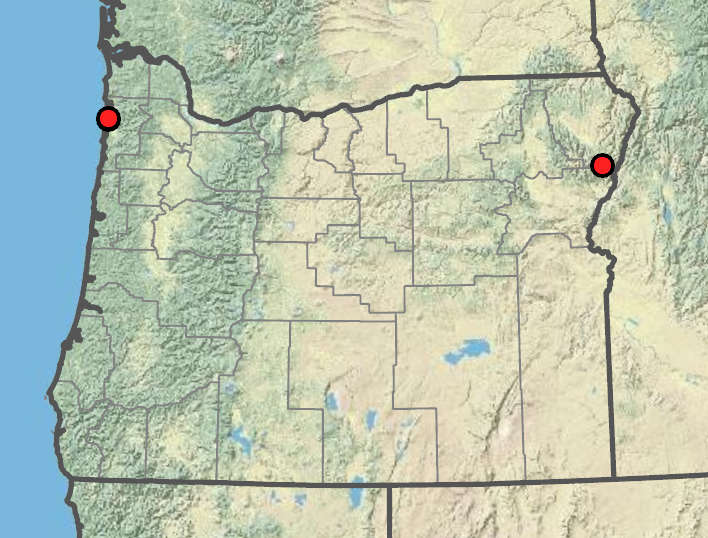Eleocharis engelmannii
Eleocharis parvula
Engelmann's spikerush
small spikerush
terete, 2–40 cm × 0.5–1.5(2) mm.
terete, 2–9 cm × 0.2–0.5 mm.
lanceoloid to subcylindric, 5–10(20) × 2–3(4) mm;
proximal scale empty, encircling approximately 67% of culm; floral scales 25–100(200), 8–12 per mm of rachilla, 2(2.5) × 1–1.3 mm;
apex narrowly rounded to subacute.
2–4 × 1–2 mm;
proximal scale 50% or more of spike length; floral scales 6–10 per spike, 1.4–2.7 mm;
apex rounded to subacute.
perianth bristles present or often absent; (0)5–8; about as long as the achenes;
anthers 0.3–0.7(1) mm;
stigmas 2–3.
perianth bristles 6, usually equaling achene to slightly exceeding tubercle, sometimes unequal and some 50% of achene; very rarely rudimentary;
anthers 0.7–1.2 mm;
stigmas (2)3.
biconvex or to 33% greatly compressed trigonous, 0.9–1.1(1.5) × 0.7– 1.1 mm.
thickly trigonous, 0.9–1.2 × 0.55–0.75 mm.
persistent, apex of distal leaf sheath obtuse to acute, with tooth to 0.3 mm.
often disintegrating, thinly membranous;
apex rounded.
depressed, subdeltoid, 0.1–0.3(0.4) × 0.6–0.9(1) mm, 10–40% as high as wide, 25% or less as high as achene, 90% as wide as achene.
0.1–0.2 × 0.15 mm.
Eleocharis engelmannii
Eleocharis parvula
Freshwater shores exposed by seasonal low water levels, marshes, disturbed wetlands. 50–500 m. WV. CA, ID, WA; north to British Columbia, east to MA, southeast to AL. Native.
Eleocharis engelmannii is similar to E. ovata and the much more common E. obtusa but has markedly shorter tubercles and usually more cylindric spikes.
Brackish or saline tidal marshes and other coastal wetlands. 0–50 m. Est. CA, WA; throughout much of North America; Eurasia. Native.
When growing submerged in deeper water, the plants may not produce spikes and can be confused with E. acicularis and Schoenoplectus subterminalis.
Barbara Wilson, Richard Brainerd, Nick Otting
Barbara Wilson, Richard Brainerd, Nick Otting
- Local floras:
BC,
CA,
OR,
WA
- Local Web sites:
CalFlora,
CalPhotos,
Flora NW,
PNW Herbaria
WildflowerSearch
iNaturalist (observations)
USDA Plants Database
- LBJ Wildflower Center
- SEINet
- Plants of the World Online
- Encyclopedia of Life
- Wikipedia
- Google Image Search
- Local floras:
BC,
CA,
OR,
WA
- Local Web sites:
CalFlora,
CalPhotos,
Flora NW,
PNW Herbaria
WildflowerSearch
iNaturalist (observations)
USDA Plants Database
- LBJ Wildflower Center
- SEINet
- Plants of the World Online
- Encyclopedia of Life
- Wikipedia
- Google Image Search



